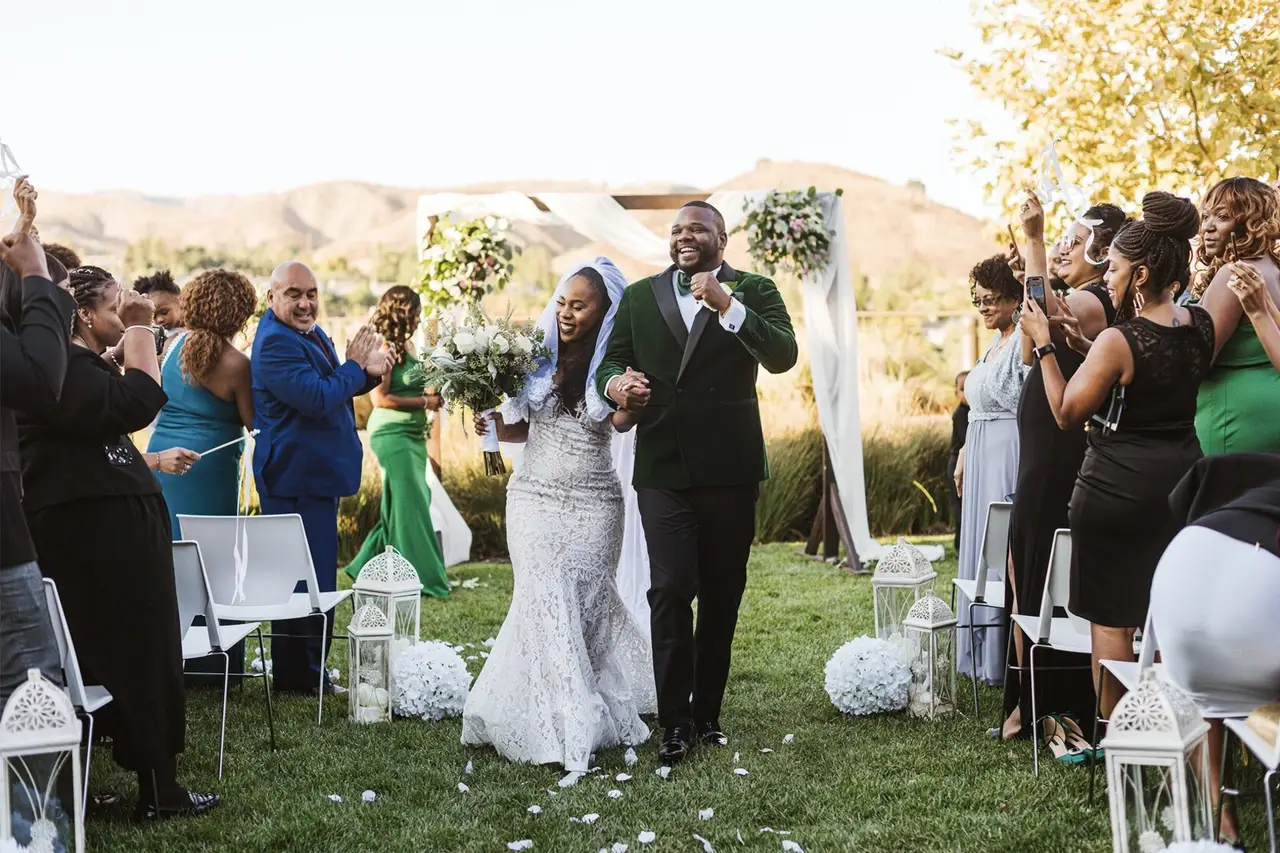Fashion
A Complete Guide: The Basis for Selecting Lab Made Diamond Rings

A Complete Guide: The Basis for Selecting Lab Made Diamond Rings
We have constantly been attracted to diamonds. For millennia, their luminosity, ferocity, and ageless allure have represented affection, willpower, and joyful celebration. However, lab-made diamond earrings are a brand new breed of diamonds that have surfaced recently and offer the identical splendid shine with a present day twist.
This article explores the arena of lab-grown diamonds, which include how they are made, their benefits, and how to pick the precise ring that matches your private fashion and beliefs.
Science and Glamor: Revealing the Process of Producing Artificial Diamonds
Lab-made diamonds are painstakingly created in controlled occasions, in assessment to their mined opposite numbers, which can be generated deep inside the Earth over thousands and thousands of years. Two foremost methods are employed:
- This method simulates extreme warmth and strain to grow a diamond seed into a bigger gem, simulating the natural situations below which mined diamonds increase.
- This method involves submerging a diamond seed into a carbon-wealthy gasoline-filled vacuum chamber. Applying energy causes the fuel to decompose and deposit carbon atoms on the seed, regularly growing a brand new layer of diamond.
The final lab-grown diamonds have the exact same bodily and chemical characteristics as diamonds which might be mined. Even skilled gemologists can not inform the distinction among them without a specialized system considering that they share the identical hearth, brilliance, and sturdiness.
Beyond Glamor: Benefits of Lab Diamonds for Ethics and the Environment
The traditional diamond mining zone has come beneath fire for its ethical problems and its bad consequences on the environment. Lab-grown diamonds present a robust replacement.
- Sustainable and Free from Conflict: In some areas, the mining of diamonds can lead to exploitation and conflict. This worry is removed by lab-created diamonds, guaranteeing that your ring is a symbol of your dedication to moral behavior.
- Green Option: Extracting diamonds wishes quite a few sources and has the potential to disturb ecosystems. The environmental effect of lab-grown diamonds is lower considering that they’re produced in regulated, power-efficient situations.
- Accessible Beauty: Larger and fancy coloured diamonds may be obtained more easily through the managed fabrication method, and they’re regularly greater and reasonably priced than similarly-pleasant mined diamonds.
How to Choose a Lab-Made Diamond Ring and Find Your Ideal Match
Many considerations should be made when selecting your lab made diamond rings:
Diamond Quality’s Four Cs:
Cut: The brilliance of a diamond is greatly influenced by its cut. Oval, princess, emerald, and round cuts are popular because they have the most shine.
Color: A scale from D (colorless, most precious) to Z (faint yellow) is used to grade diamonds. Think approximately if an elaborate colored diamond, like purple or blue, or a drab stone is more your style.
Clarity: A diamond’s readability and value are impacted by the life of inclusions, or inner faults, and blemishes, or floor imperfections. Select a clarity that moves stability among cost and elegance.
Carat Weight: The diamond’s weight and size are referred to here.
Setting Style: Your diamond’s setting should be chosen carefully to best showcase it and match your own style. Popular choices include side stones (adding glitter and visual weight), three-stone (representing the past, present, and future), halo (extra smaller diamonds surrounding the center stone), and solitaire (the traditional single diamond).
Selecting a Metal: Common alternatives consist of rose gold, white gold, yellow gold, and platinum. Think about the color of the metal that remarkably suits the design of the hoop and your pores and pores and skin tone.
Certification and Purchasing Advice: Whenever possible, pick out a lab-grown diamond that has been licensed via a respectable organization which includes the International Gemological Institute (IGI) or the Gemological Institute of America (GIA). This confirms the 4Cs grading of the diamond and guarantees its genuineness. When creating a buy, select a truthful jeweler who values ethical sourcing and transparency, whether they’re an internet or bodily safe.
Comparing Lab-Made vs. Mined Diamonds: Consider Your Choices
Unquestionably, both lab-grown and mined diamonds are stunning and top notch. Below is a summary of their primary differences:
Comparabilities:
- Physical and Chemical Properties: Both are the same in phrases of hardness, hearth, and brightness and proportion the equal chemical composition.
- Durability: With the proper upkeep, each is incredibly resilient and may endure for plenty of generations.
Principal differences:
- Origin: While mined diamonds arise naturally over thousands and thousands of years, lab-grown diamonds are synthetic in controlled situations.
- Cost: Compared to mined diamonds of equal period and great, lab-grown diamonds are commonly much less pricey.
- Environmental Impact: When compared to diamonds which are probably mined, lab-grown diamonds have a much smaller environmental impact.
- Prospective Investment: In the beyond, mined diamonds have been extra treasured when resold. Nonetheless, the market for laboratory
Entertainment
From Engagement to Aisle Essential Wedding Prep Tips

From Engagement to Aisle Essential Wedding Prep Tips
Congratulations on your engagement! This exciting milestone marks the beginning of an incredible adventure that leads to your wedding day. Whether you’re a bride-to-be, a groom-to-be, or a wedding planner, there are numerous details to consider and decisions to make.
Nailing the Engagement Period – Tips for Enjoying and Preparing for the Wedding Journey
The engagement period is a special time, filled with love, excitement, and anticipation. It’s essential to savor these moments while also laying the groundwork for your big day. Here’s how you can make the most of it.
First, take time to celebrate your engagement with family and friends. Host a small party or a casual get-together to share your joy. This is a great opportunity to introduce key members of both families and start building a support network.
Next, start discussions about your vision for the wedding. This includes talking about the style, size, and setting you both envision. Having these conversations early will help align your expectations and make future decisions easier.
Finally, don’t forget self-care during this busy period. Engage in activities that both of you enjoy, whether it’s a weekend getaway or a relaxing spa day. Remember, a stress-free couple is a happy couple!
Choosing the Perfect Date and Venue – Insights and Checklist
Selecting the right wedding date and venue is one of the most crucial steps in your wedding prep. Here’s a handy checklist to guide you through the process.
First, consider any significant dates. This could be anniversaries, family birthdays, or other meaningful occasions. Choosing a date with personal significance can make your wedding even more special.
Next, think about the season and climate. Do you envision a summer wedding under the sun or a cozy winter ceremony? Each season has its charm and challenges, so choose one that aligns with your vision.
Visit several options to compare their offerings, ambiance, and price. Ensure the wedding venue can accommodate your guest list comfortably and provides the amenities you need. Don’t forget to book well in advance to secure your desired date.
Budgeting and Staying on Track – Financial Tips for a Dream Wedding
Creating and sticking to a budget is vital to avoid unexpected financial stress. Here are some tips to help you manage your wedding finances effectively.
First, sit down with your partner and discuss your total budget. Be honest about your financial situation and determine how much you’re willing to spend. This will help set realistic expectations from the start.
Next, prioritize your spending. Identify the aspects of the wedding that are most important to you, such as the venue, catering, or photography. Allocate a larger portion of your budget to these priorities and look for ways to save on other elements.
Lastly, keep track of your expenses. Use a spreadsheet or a budgeting app to record every payment and compare it against your budget. Regularly review your spending to ensure you’re staying on track and make adjustments if necessary.
Finding the Right Vendors – From Caterers to Photographers
Choosing the right vendors is crucial for bringing your wedding vision to life. Here’s how to find and select the best professionals for your big day.
Start by researching vendors online and reading reviews. Create a shortlist of vendors who have received positive feedback and match your style.
Next, schedule consultations with potential vendors. This allows you to ask questions, view their portfolios, and discuss your specific needs. Pay attention to how well they communicate and whether they seem genuinely interested in your wedding.
Finally, don’t hesitate to ask for references. Speaking directly with past clients can provide valuable insights into the vendor’s reliability and quality of work. Once you’ve made your choice, be sure to sign a detailed contract to avoid misunderstandings.
Dress Shopping and Bridal/Groom Fashion Trends
Finding the perfect wedding attire is an exciting part of the preparation process. Here are some tips and trends to keep in mind while dress shopping.
Start your search early. It can take several months for a dress to be made and altered, so give yourself plenty of time. Begin by trying on different styles to see what flatters your body shape and aligns with your wedding theme.
For brides, current trends include minimalist designs, vintage-inspired gowns, and dresses with unique sleeve details. Grooms can explore options beyond the traditional black tuxedo, such as navy suits or even patterned jackets.
Accessories are also key. Brides might consider statement earrings or a delicate veil, while grooms might opt for personalized cufflinks or a stylish boutonniere. Remember, comfort is just as important as style – you’ll want to feel great throughout the entire day.
Navigating Family Dynamics – How to Keep Everyone Happy
Weddings often bring out complicated family dynamics. Here’s how to handle them gracefully and ensure a harmonious celebration.
First, set boundaries early. Communicate your decisions and preferences to family members, and kindly but firmly stick to them. This helps avoid misunderstandings and last-minute surprises.
Next, involve key family members in the planning process. Giving them specific roles can make them feel valued and reduce potential conflicts. For example, ask parents to help with guest list management or siblings to assist with decor choices.
Lastly, practice empathy and patience. Remember that your family members want the best for you, even if their opinions differ from yours. Approach conversations with a calm and open mind, and seek compromise where possible.
The Final Countdown – Last-Minute Details and Relaxation Tips
As the big day approaches, it’s essential to focus on last-minute details while also taking time to relax. Here’s how to balance both.
Create a final checklist of tasks to complete. This might include confirming vendor arrangements, finalizing the seating chart, and packing an emergency kit with essentials like safety pins and tissues. Delegate responsibilities to trusted friends or family members to lighten your load.
Set aside time for relaxation and self-care. Schedule a massage, practice yoga, or simply take a walk in nature. These activities can help reduce stress and ensure you’re feeling your best on the wedding day.
On the eve of your wedding, prioritize a good night’s sleep. Avoid caffeine and electronic devices before bed, and consider listening to calming music or meditating to ease any pre-wedding jitters.
Looking Forward to Your Big Day – Encouragement
Your wedding day is a celebration of love, commitment, and the start of a new chapter. Remember to focus on what truly matters – the joy of marrying your partner and sharing this special moment with loved ones.
Take a deep breath and savor every moment. From the walk down the aisle to the first dance, these memories will last a lifetime. And remember, it’s okay if not everything goes perfectly. What matters most is the love and happiness you share with your partner.
Here’s to a beautiful and memorable wedding day!
Fashion
Chic on the Cheap: Elevate Your Style with an Oversized Denim Jacket

Explore the effortless elegance of budget-friendly fashion with our comprehensive guide on transforming your wardrobe using an oversized denim jacket. Uncover the endless possibilities of this versatile piece as it becomes the foundation of your effortlessly stylish and budget-friendly wardrobe.
Outline:
- The Timeless Appeal of Denim Jackets
- Selecting the Perfect Oversized Denim Jacket
- Styling Tips for Everyday Chic
- Seasonal Variations
- Pairing with Accessories
- Budget-Friendly Fashion Tips
- Why Choose an Oversized Fit
- FAQs

The Timeless Appeal of Denim Jackets
Denim jackets have long been essential in the world of fashion. Their enduring attractiveness comes from their capacity to mix with different styles and fashions over the years effortlessly. An oversized denim jacket takes this allure to a new level, offering comfort and an effortlessly cool vibe. This enduring charm is why denim jackets, particularly oversized ones, have become a staple in any fashion-forward wardrobe.

Selecting the Perfect Oversized Denim Jacket
When selecting an oversized denim jacket, several factors must be considered to ensure you find the perfect piece. Look for high-quality denim that will stand the test of time. Dark blue, black, and light wash are popular choices that complement various outfits. Consider the detailing—patchwork, mixed fabrics, or embroidery can add a unique flair. The fit is crucial, too; a relaxed, comfortable fit is critical to achieving that effortlessly chic look. Finally, don’t overlook practical features like roomy pockets and unique details like fringe or intricate back designs.

Styling Tips for Everyday Chic
An oversized denim jacket is incredibly versatile, making it easy to style for any occasion. Elevate a laid-back day by teaming up a basic T-shirt and jeans to enhance your casual style. This double-denim look can be timelessly stylish when done right. For a touch of femininity, wear it over a flowing dress; the contrast between the rugged denim and soft fabric creates a balanced, effortless outfit.
Experimenting with Layers
Don’’t hesitate to layer your jacket over hoodies or sweaters during colder months. This not only keeps you warm but also adds dimension to your look. Accessories like scarves and beanies can further enhance this layered style.

Seasonal Variations
The oversized denim jacket is a great choice all year round. It’s light enough to throw over a tank top or summer dress in spring and summer. Look for lighter shades or jackets with distressed designs to keep the look breezy. As autumn approaches, opt for darker hues and pair them with boots and knitted scarves. Winter calls for heavier layering; consider wearing your jacket under an enormous coat for added warmth and style.

Pairing with Accessories
Accessories have the power to enhance or detract from an ensemble, and an oversized denim jacket is no different. Chunky jewelry, such as large hoop earrings or statement necklaces, can stand out against the background of classic denim. Belts are another great accessory, particularly if you want to cinch in your jacket for a more varied silhouette.
- Layered necklaces
- Wide-brim hats
- Stylish sunglasses
- Patterned scarves
Don’t be afraid to experiment with different accessories to find your style best.

Budget-Friendly Fashion Tips
Embracing affordable fashion doesn’t mean compromising on style. Look for sales, thrift shops, and online discount stores when shopping for your oversized denim jacket. Reusing and repurposing old jackets is another cost-effective method; add your patches or embroidery to refresh an old piece. A well-selected coat can be dressed up or down, making it a multipurpose item that offers excellent value for money.

Why Choose an Oversized Fit
The oversized fit isn’t just a trend; it offers practical advantages, too. The comfortable, loose fit allows for freedom of movement, making it perfect for everyday wear. It makes layering easy and gives your outfits a laid-back, effortless vibe. Moreover, the oversized look can suit various body types, offering a flattering silhouette that balances proportions. Whether styled casually or dressed up for an evening out, an oversized denim jacket can be a versatile addition to your wardrobe.

FAQs
How can I style an oversized denim jacket for a formal setting?
Pair tailored trousers and a chic blouse with your jacket. Elevate the look with elegant accessories like statement necklaces, such as a statement necklace and heeled boots.
What types of dresses go well with an oversized denim jacket?
Flowy summer dresses, maxi dresses, and even bodycon dresses pair well with an oversized denim jacket. The contrast between the structured denim and soft fabric creates a balanced look.
Can I wear an oversized denim jacket in winter?
Yes, you can. Layer it under a heavier coat or over thick sweaters and hoodies. For extra warmth, add warm accessories like knitted scarves and beanies.
What accessories complement an oversized denim jacket?
Bold jewelry, stylish hats, and patterned scarves are excellent choices. Wide-brim hats and layered necklaces can add flair to your outfit.
Health
Environmental Damage: Skincare Tips for Urban Dwellers

Living in an urban environment can significantly impact your skin. The combination of pollution, UV radiation, and the fast-paced city lifestyle can lead to premature ageing, dryness, and other skin issues. However, with a proper skincare routine and protective measures, it’s possible to mitigate these effects and maintain healthy, glowing skin.
Here is a look at how urban environments affect the skin and suggest ways to combat the damage. This guide will cover some essential skincare tips, from cleansing and exfoliation to sun protection and using a night repair serum. Embrace these strategies to maintain a vibrant, youthful complexion despite the challenges of city living.
The Impact of Urban Environments on Skin
Urban areas are notorious for high levels of pollution. Airborne particles, such as dust, smoke, and chemicals, can settle on the skin, clogging pores and leading to breakouts. These pollutants also generate free radicals, which can damage skin cells, causing fine lines, wrinkles, and loss of elasticity. Additionally, the stress of city living can exacerbate skin problems, leading to conditions like eczema and acne. UV radiation is another big concern for urban dwellers. Despite spending more time indoors, city residents are still exposed to harmful UV rays. These rays can penetrate through windows and reflect off buildings and sidewalks, leading to cumulative sun damage over time. This exposure can cause hyperpigmentation, sunburn, and an increased risk of skin cancer.
Skincare Tips to Mitigate Environmental Damage
To combat the effects of urban living on the skin, it is essential to adopt a comprehensive skincare routine. Here are some effective strategies:
Cleansing
Start with a gentle cleanser to remove dirt, oil, and pollutants from the skin. Cleansing twice daily, morning and night, ensures that the skin remains impurities-free. Look for cleansers that contain antioxidants, which can neutralise free radicals and prevent oxidative stress.
Exfoliation
Regular exfoliation removes dead skin cells and unclogs pores, allowing for better absorption of skincare products. Use a mild exfoliant two to three times a week to avoid over-exfoliation, which can irritate the skin. Ingredients like alpha hydroxy acids (AHAs) and beta hydroxy acids (BHAs) are excellent choices for exfoliation.
Hydration
Keeping the skin hydrated is crucial in an urban environment. Pollution and UV exposure can strip the skin of its natural moisture, leading to dryness and irritation. Use a hydrating serum or moisturiser with hyaluronic acid, glycerin, and ceramides to lock in moisture and strengthen the skin’s barrier function.
Sun Protection
Sun protection is non-negotiable for urban dwellers. Apply a broad-spectrum sunscreen with at least SPF 30 every morning, regardless of the weather. If you spend time outdoors, reapply every two hours. Consider using a sunscreen that contains antioxidants for added protection against environmental aggressors.
The Role of Night Repair Serum
Nighttime is when the skin undergoes natural repair, making it the perfect opportunity to use a night repair serum. These serums are formulated to work with the skin’s regenerative cycle, helping to repair and protect against the damage caused by pollutants. These serums often contain a combination of antioxidants, peptides, and retinoids, which work together to rejuvenate the skin. Antioxidants neutralise free radicals accumulated throughout the day, peptides stimulate collagen production, and retinoids promote cell turnover, reducing the appearance of fine lines and improving skin texture. A serum like this can also enhance the skin’s barrier function, making it more resilient to environmental stressors. Apply the serum after cleansing and before moisturising to maximise its benefits. Consistent use can help restore a healthy, radiant complexion.
In conclusion, urban living presents unique challenges for maintaining healthy skin. However, with a targeted skincare routine, protecting and repairing the skin from environmental damage is possible. Embrace these skincare tips to maintain a vibrant, youthful complexion in any urban environment.
-

 Marketing2 months ago
Marketing2 months agoUnlocking the Potential of FSI Blogs: A Comprehensive Guide
-

 Blog5 months ago
Blog5 months agoThe Seating Arrangement Surprise: A Story About Sitting Next to a Scary Yakuza
-

 Blog5 months ago
Blog5 months agoUnderstanding Chancerne: Unveiling the Science Behind this Enigmatic Phenomenon
-

 Tech4 months ago
Tech4 months agoUnveiling the Wonders of divijos: Revolutionizing Our World
-

 Business5 months ago
Business5 months agoUnderstanding Trading: Unveiling the Dynamics of Financial Markets
-

 Health3 months ago
Health3 months agoDiscover the World of Ztec100.com: Your Ultimate Guide to Tech, Health, and Insurance
-

 Blog5 months ago
Blog5 months agoMastering Pal Trading in Pal World: A Comprehensive Guide
-

 Blog5 months ago
Blog5 months agoUnlocking the Potential of Gidler: A Comprehensive Guide to Understanding and Harnessing its Power










